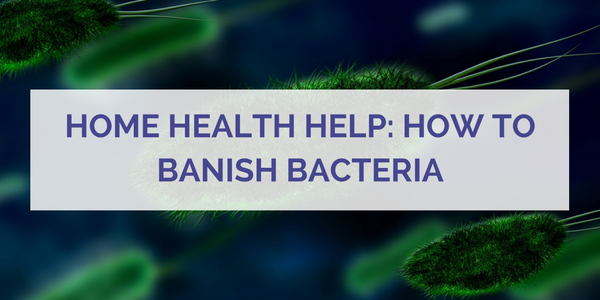
Did you know that the toilet seat is NOT where you will find the most bacteria in your home?
Bacteria such salmonella and E. coli, as well as germs that can cause infections like MRSA, can be found all over you home, not just the bathroom. In our latest blog on health in the home, we share everything you need to know about bacteria and what you can do to keep your home clean and above all, SAFE, from the nasties that could make you and your family seriously ill.
Chopping boards
What’s the risk?
Chopping boards have been shown to often harbour dangerous coliform bacteria as well as other molds and yeasts.
How can you protect yourself?
Wash thoroughly after every use, either by hand or in the dishwasher. Use an antibacterial washing up liquid and scrub in hot water.
Cooker knobs
What’s the risk?
Cooker knobs have also been shown to be one of the most popular places to find coliform bacteria. We are likely to turn on knobs whilst cooking in between food preparation, often forgetting to wash our hands and the raw or partially cooked food is also easily spilled on the cooker hob and knobs.
How can you protect yourself?
Remove the knobs regularly and wash in hot soapy water. Clean your cooker hob and knobs after every use to keep it spotless by using an off the shelf antibacterial spray or a homemade natural solution.
Worktops
What’s the risk?
Spillages and raw food have been shown to cause worktops to grow molds and coliform bacteria.
How can you protect yourself?
Clean after every use with an antibacterial spray, bleach/water solution, or natural antibacterial solution. Make sure your worktop doesn’t require specialist solutions to prevent damage to the surface.
Pets
What’s the risk?
If you’ve got a pet, you’ll already be aware that they can make a bit of a mess of your house, but did you know their toys can actually be dangerous. Balls, dog chews, and other toys have been shown to contain bacteria and molds. Food bowls are another big problem.
How can you protect yourself?
Scrub hard toys with soap and water. Make sure you rinse them thoroughly to avoid harming your beloved pooch when you give them back. Put soft toys like balls into the washing machine on a hot wash. Put bowls in the dishwasher or hand wash with an antibacterial liquid.
Bathroom sinks
What’s the risk?
The sink, and more importantly the handles, are a major problem when it comes to bacteria. We can’t wash our hands after using the toilet without using the tap! Do you really give it the cleaning it the thorough and regular cleaning it requires?
How can you protect yourself?
Clean daily with an antibacterial wipe or disinfectant spray.
Kitchen sinks
What’s the risk?
The kitchen sink is exposed to all sorts of nasties. Raw and rotting food, dirty plates and much more have been shown to cause coliform bacteria and molds. That’s why you should never wash raw chicken and cook it straight from the packaging. By washing it, you are simply spreading the harmful bacteria all over your sink and anywhere else the water splashes.
How can you protect yourself?
Clean every part of your sink, including the taps, sides, and base, twice a week, using a bleach-based solution or disinfectant spray. Be sure to pour bleach down the drain to kill off the bacteria growing down there too.
Toothbrush holders
What’s the risk?
Our mouths contain an amazing number of harmful bacteria and this is often transferred to the toothbrush holder and left to breed after we’ve finished brushing our teeth. It is also usually located near the toilet and airborne faecal particles can quickly find their way to your toothbrush holder, where they will settle and breed bacteria too. A disgusting thought isn’t it!
How can you protect yourself?
Do you clean your toothbrush holder enough? You should clean it at least twice a week either by hand or by sticking it in the dishwasher.
Sponges and dishcloths
What’s the risk?
By far the worst place for bacteria in your home is in sponges and dishcloths, ironically the tools we use to clean the house in the first place! Coliform bacteria, molds, and yeasts are usually present and even the most dangerous staph bacteria have been found regularly.
How can you protect yourself?
Use your microwave to zap sponges on a daily basis, this will kill off the bacteria. Wash dishcloths in the washing machine and be sure to replace both sponges or cloths every two weeks.
By following the advice above your home should be spotlessly clean and bacteria free to help you protect yourself, and your family, from nasty bugs that could make you seriously poorly.
Stay tuned for next month’s home health blog when we will tackle the serious health issue of mold in your home and explain what you can do to get rid of it.
Written by Mike Pye